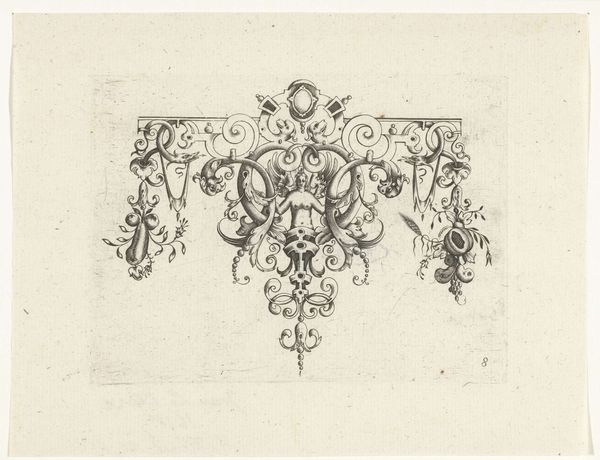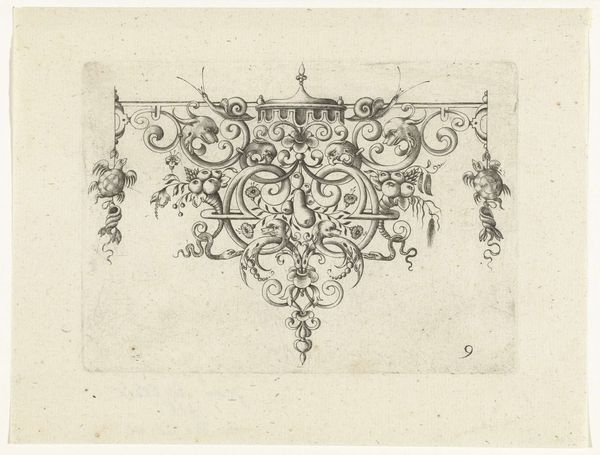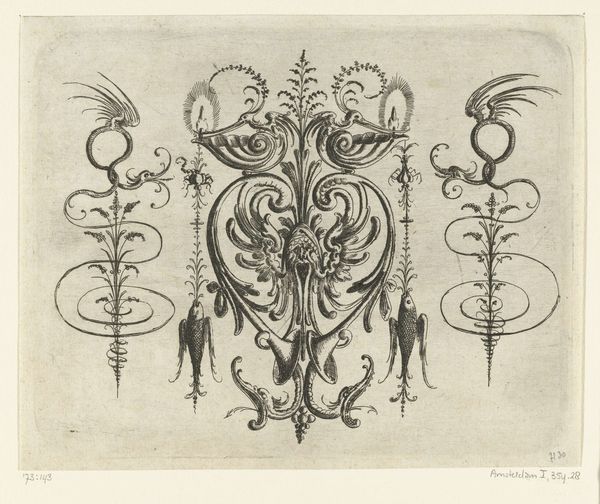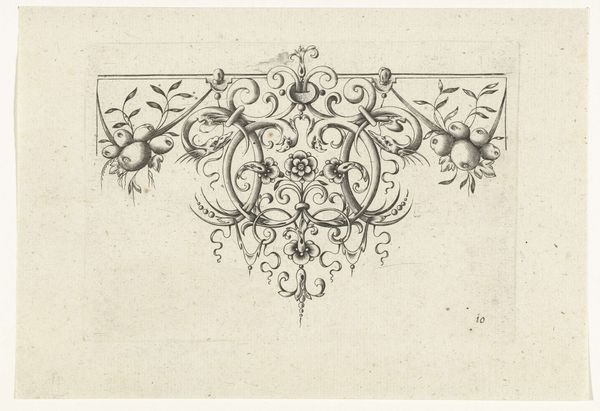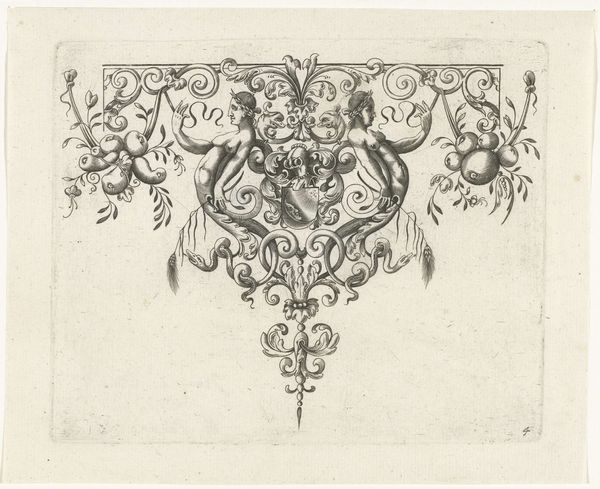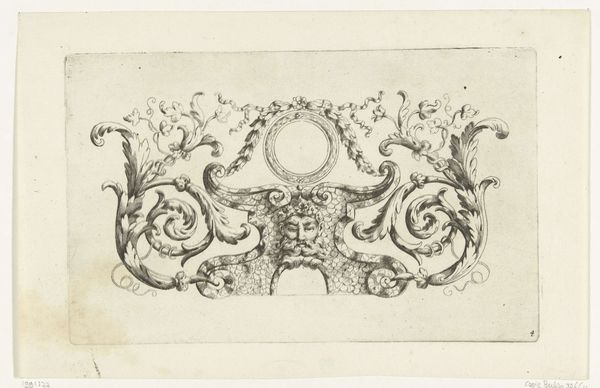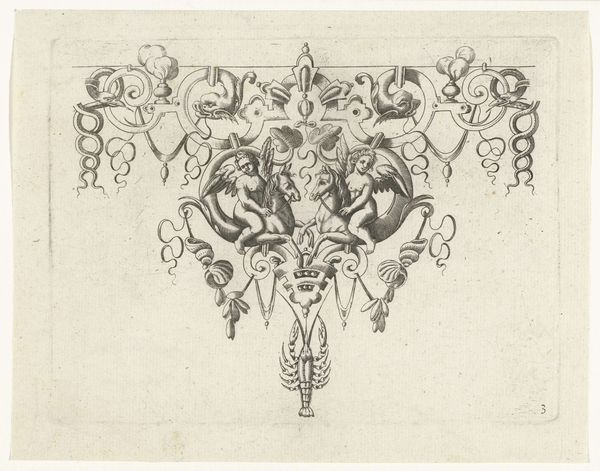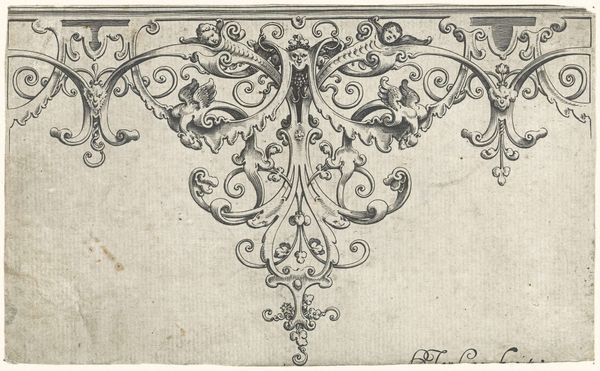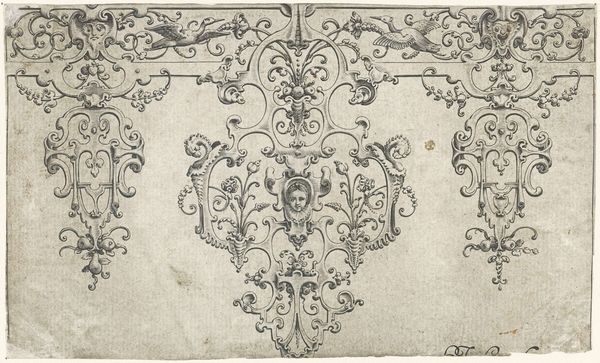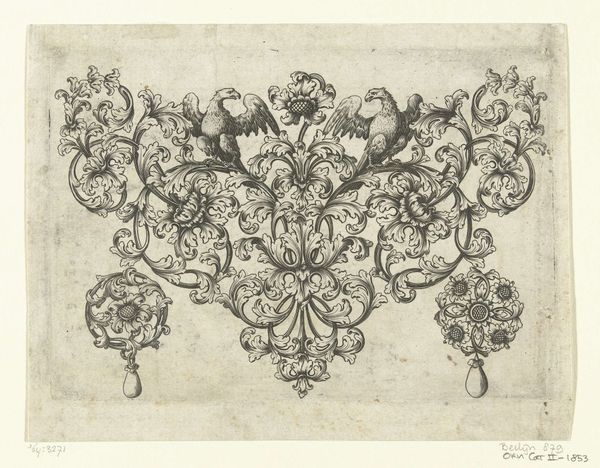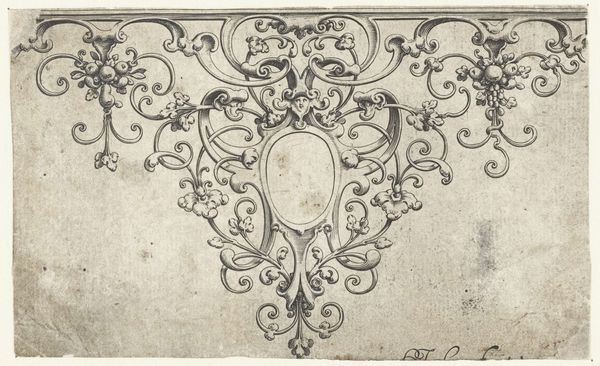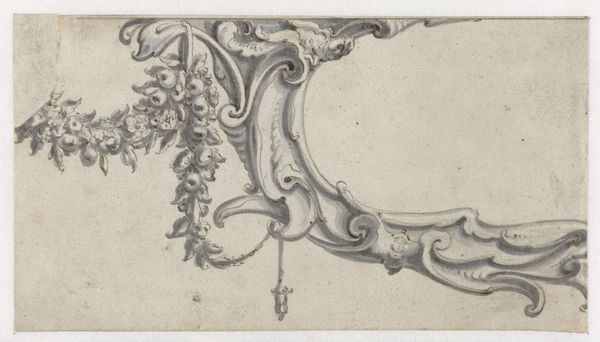
drawing, print, engraving
#
drawing
#
baroque
# print
#
figuration
#
11_renaissance
#
geometric
#
line
#
engraving
Dimensions: height 108 mm, width 153 mm
Copyright: Rijks Museum: Open Domain
Curator: Immediately, I see balance. Symmetrical, classical... yet there's something slightly unsettling about those figures. Editor: Indeed! What you're viewing is a work entitled "Randornament met twee gevleugelde hermen" a print drawn by H. Picart around 1618. Its creation falls squarely within the Baroque era. The title translates roughly to "Border Ornament with Two Winged Herms," which I find quite descriptive, wouldn't you say? Curator: Quite! And Baroque really hits the nail on the head. Despite the symmetry, those stylized lines practically writhe. The winged herms—half-human, half-decorative—appear caught in a moment of precarious balance as they tend to an urn overflowing with symbolic abundance. There's an almost paradoxical tension between beauty and unease here. Editor: I'm glad you mentioned unease! Consider the function of such an image. This wouldn't hang as art for art's sake. Prints like this circulated widely, providing patterns and inspiration for artisans decorating everything from furniture to buildings. So while it carries an element of strangeness, it's very purpose speaks to the socioeconomic networks and aspirations of its time. It hints at the aesthetic ideals these artisans wished to propagate through everyday life. Curator: That reframes it, certainly. So this almost unsettling beauty was not merely to be admired, but assimilated, woven into the fabric of the early 17th century. Are we looking, perhaps, at symbols of wealth and status finding their way into the cultural subconscious? Those wings, those bursting flowers... all signifiers speaking to deeper needs, to ideas of elevation. Editor: Exactly! And think about the material itself—an engraving. A readily reproducible image allows for mass influence. The artist isn't simply creating; he is participating in shaping an aesthetic agenda of sorts. Through distribution, they reinforce dominant beliefs in classical ideals during that time. Curator: So by understanding the intent and cultural context of Picart’s Randornament, that tension transforms. What seemed like unease becomes a conscious attempt to convey and cement symbolic power through reproducible art, that the winged Herms are a fusion of the ethereal and the practical, of divine and civic ideas. Editor: Precisely. Seeing it that way suddenly elevates it beyond simple ornament to a window into 17th-century values. It invites you to explore society by looking at art with more awareness. Curator: What begins as a striking composition reveals itself to be a historical artifact loaded with cultural aspirations and subconscious ideas! The power of art through its symbolism to reveal how much things stay the same and change over time is a captivating idea.
Comments
No comments
Be the first to comment and join the conversation on the ultimate creative platform.
